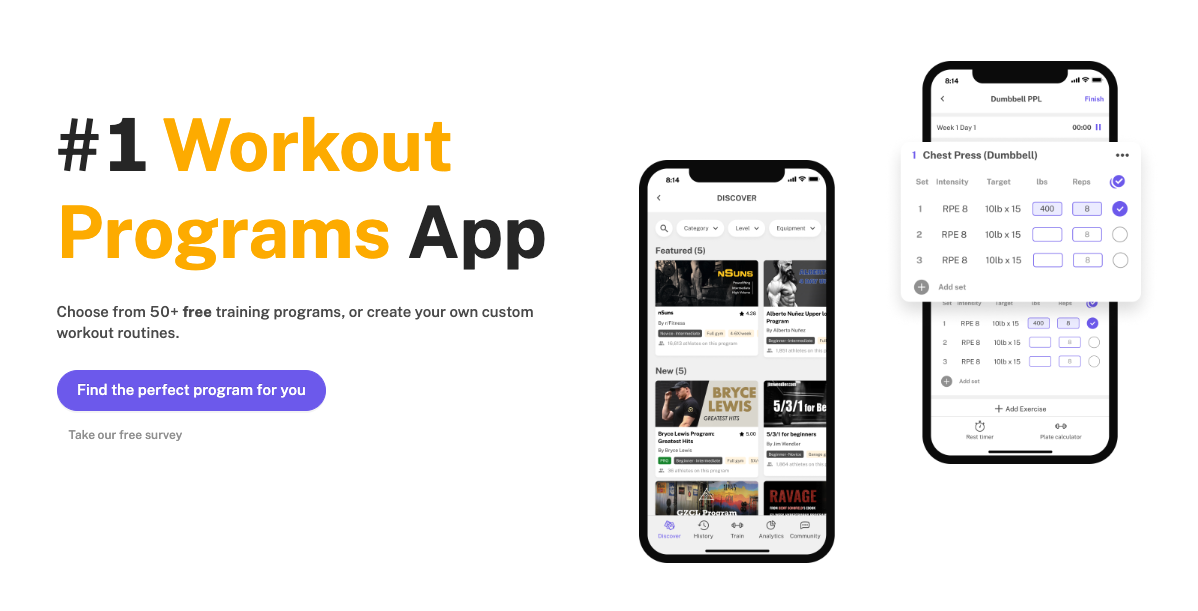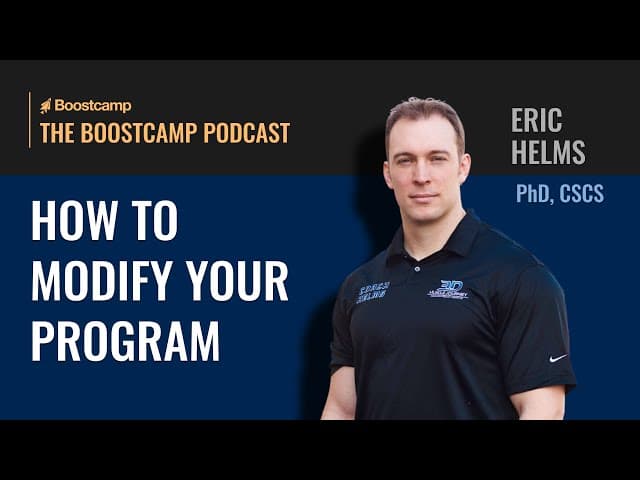How to Effectively Modify Your Workout Program
Written by The Boostcamp Editors
Adjusting a workout program for your needs
Too many times do you see people walking into the gym, whether they are training for bodybuilding or powerlifting or whatever, and just going through the motions, not really maximizing their time there. They have no clear goal, they may be following a basic push pull legs program or maybe an upper lower, but really they are doing the same exercises, the same volume and intensity, and not changing anything but still expecting to make massive gains. This is not ideal, and leads to plateaus. Your training program has a huge impact on your physique and strength, and your progression as a whole. Following a program for a long time without changing things up can lead to going stagnant and just not making any progression. But, when should you modify your workout program? And how can you do it effectively?
The topic of how to modify a workout program actually came up when Boostcamp’s very own Michael Liu sat down with Dr. Eric Helms. Boostcamp is a workout app that allows you to choose and follow a workout program, but also modify the workouts.
Let’s dive in.
When Should you Modify a Workout Program?
Dr. Helms stated that one of the places that modifying a workout program makes the most sense, is in bodybuilding programs. When following a bodybuilding program, you are looking to build muscle mass rather than strength, and changing up the exercises helps to provide overload to the muscles to break them down and force them to adapt. Eric says that there are a few basic movement patterns that you will come across, and they are as follows:
Horizontal Push- Exercises such as the bench press, incline press, movements where you are pushing away from your body horizontally.
Horizontal Pull- These are your rowing exercises, maybe barbell rows or dumbbell rows, but any movement that involves pulling towards you.
Vertical Push- These are exercises that involve pushing upward, so military press, dumbbell shoulder press, Arnold presses, movements like that.
Vertical Pull- Movements such as lat pulldowns and pull ups, basically where you are pulling something towards your body from above you.
Squat Patterns: Any movement that involves simultaneous hip and knee extensions. These can be leg presses, or hack squats, or the barbell squat to name a few.
Hip Hinges: These are movements that are primarily hip extensions with minimal knee extension, so these are movements like RDLs, good mornings, movements along those lines.
What Dr. Helms states, is that these movement patterns are easily able to be swapped out, especially in a bodybuilding program. So the question is when should you do so? Well, you can modify your workout program and swap out these exercises as needed. For example, if you cannot do 10 pull-ups, there is nothing wrong with doing lat pulldowns, as long as you are hitting the target rep range utilizing the same intensity or RPE that the program is calling for. Another example is if you cannot do a barbell bench press due to elbow or shoulder pain, it is completely okay to swap that out for a dumbbell bench press, again as long as you are hitting the target rep range and using the same intensity or RPE.
In short, swapping out exercises and modifying a workout program is completely okay if you are unable to complete the movement due to working around an injury, or inability to complete a lift for the desired amount of reps.
When NOT to Modify a Workout Program
Swapping out exercises based on the movement pattern is fairly simple, if you are in a bodybuilding program. This is because bodybuilding is focused on hypertrophy, rather than strength. On the flip side, when it comes to a strength focused program, whether you are powerlifter, strongman, or Olympic Weightlifter, swapping out exercises and modifying a workout program gets a little more complicated. This is because the trainee is aiming to add strength, rather than muscle mass, and certain exercises will have better transfer to other lifts.
One example Dr. Helms uses is when someone swaps out a good morning for an RDL on a strength program. Though both movements involve a hip hinge and work the same muscle groups, this can be detrimental because you can argue that a good morning may have a better transfer over to a squat, rather than an RDL which may have a better transfer to a regular deadlift. This is because when doing a good morning, the bar is on your back while in an RDL the bar is in your hands.
This means that instead of just modifying your workout program on your own, it is better to consult with your coach or the program writer to make sure that swapping out something and modifying the workout program will not compromise another aspect of the program itself. Again, this is more so for people who follow a strength program rather than a hypertrophy program.
One more thing that Dr. Helms states when it comes to when not to modify your workout program, be wary of how often you do so. Some studies have shown that even when on hypertrophy programs, the participants that swapped out exercises week after week did not have as much progression in terms of muscle mass.
Interchanging Compound vs. Isolation Exercises
Now, as stated above, a strength program is different from a hypertrophy program, where swapping out exercises and modifying the program may be a bit more challenging. However, with a hypertrophy program, you can swap out any exercise as long as they are on the same movement pattern, no matter if they are compound or isolation exercises.
The example that Dr. Helms uses is if your elbows hurt on a barbell bicep curl, but not on a cable, there is no harm in using cable bicep curls instead of barbells. They are still targeting the biceps in pretty much the same way, and allow room for growth. However, when it comes to swapping out compound exercises for isolation exercises, this is a gray area, even on hypertrophy programs. If your program calls for bench press, and you change that out for pec flyes, you are not getting the same results out of that, as you are not training the same biomechanical movement. That being said, you should take everything into consideration if that is what you plan on doing.
Finding a Good Workout Program
Finding a good workout program to help guide you when it comes to furthering your progress. Keep in mind that good programs will help with your fitness journey, you would want to find a program that caters to your needs and guides you in the right direction, making sure that you are making the most gains. If you are looking to stay on track and continue with linear progression, then finding a good workout program is the key. Where do you look for a good workout program? Check out the Boostcamp App for some great programs.
Boostcamp is home to over 50 FREE workout programs that consist of strength, hypertrophy, or functional fitness, or both, from the push pull legs program all the way to upper lower, there are so many programs to choose from that can help fit your needs. However, with Boostcamp, you don’t have to just follow a pre-written program (although each program is written by a professional), you also can create your own program as well, and track your progress to make sure you are on the right track. That being said, when you are looking to incorporate some serious training to further your progress, then check out Boostcamp.

Wrap Up
Overall, modifying your workout program is something that can be done fairly easily if you are on a hypertrophy program. Dr. Helms explains that there are six movement patterns, and as long as you are swapping exercises out for the same movement patterns, there is no harm if you keep the same intensity and hit the desired amount of reps. However, modifying a strength program is not as simple, as there are some movements in those programs specifically designed to transfer over to other lifts.
Will you be modifying your workout program?
Be sure to follow Boostcamp on Instagram and subscribe on YouTube!

